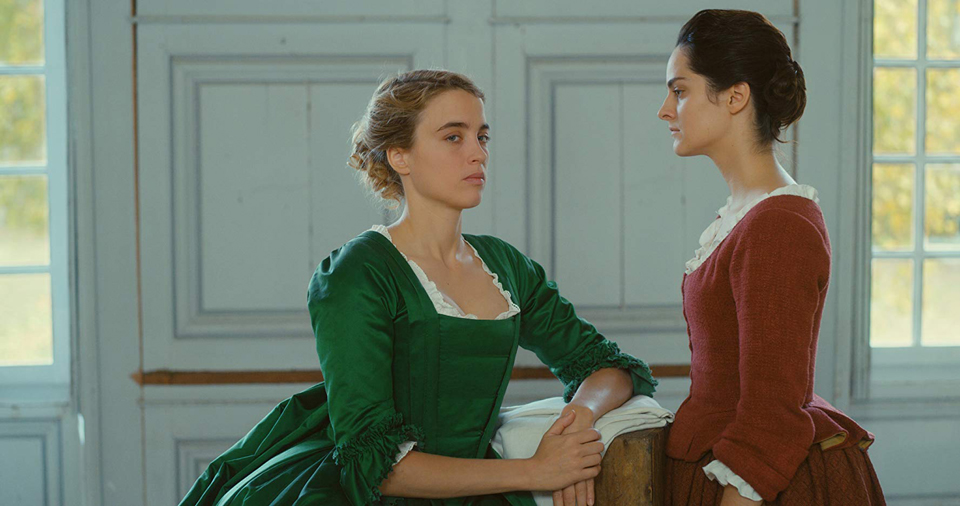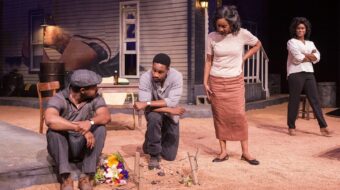
Writer/director Céline Sciamma’s Portrait of a Lady on Fire epitomizes the type of specialty cinema that makes a cineaste’s heart go pitter patter when it plays at a favorite art house. On the other hand, popcorn munchers at the local multiplex used to superheroes, explosions and car chases would likely find this two-hour foreign film subtitled in English to be excruciatingly slow, “redeemed” only by its hot lesbian sex scenes.
This French feminist film—which won the Cannes Film Festival’s Best Screenplay and Queer Palme awards, and was nominated for Cannes’ grand prize, the Palme d’Or—is set in Brittany in 1760. Portrait ponders: How enlightened was the Enlightenment when it came to women and their rights? In particular, how reasonable was the Age of Reason when it came to the love that dared not speak its name—especially when it involved the female of the species?
Marianne (Noémie Merlant) is a painter surreptitiously commissioned to paint the wedding portrait of Héloïse (Adèle Haenel), who recently left a convent and is about to enter into a traditional marriage arranged by her conventional mother. Sophie (Luana Bajrami) is Héloïse’s servant at her chateau, who has an 18th-century abortion during the film.

While Héloïse is posing for Marianne they fall in love and have a torrid sexual affair at a time when this was extremely taboo. As a token of her appreciation, at Héloïse’s request Marianne also paints a miniature portrait of herself for Héloïse. The expressive composition for this shot is completely unique, which I’ve never ever seen before onscreen. To do this 18th-century version of a “selfie,” the dauber places a small mirror in the model’s crotch, in order for Marianne to be able to see and paint her reflection. Compositionally, it’s as if the mise-en-scène is expressing the notion that it is through Héloïse’s sexuality that Marianne is able to finally, fully be and see her true self.
There is an element of a feminist cult or perhaps witchcraft to this singular film, which is a meditation on feminism, lesbianism and the role of art that at times has a surrealistic feel, as in the movies by Luis Buñuel. There is also some spectacular scenery of Brittany’s rugged coastline. Sciamma (Girlhood, Tomboy) has emerged as one of the top French female auteurs.
Portrait of a Lady on Fire has been an official selection at the Telluride, Toronto and New York film festivals. It theatrically opens Dec. 6 for a one-week exclusive engagement in L.A. at the ArcLight Hollywood and in N.Y. at the Angelika Film Center, and just in time for Valentine’s Day, Portrait opens wide February 14, 2020. Serious cinefiles are likely to rejoice at this original take on when Voltaire met Sappho.
The trailer can be viewed here.












Comments